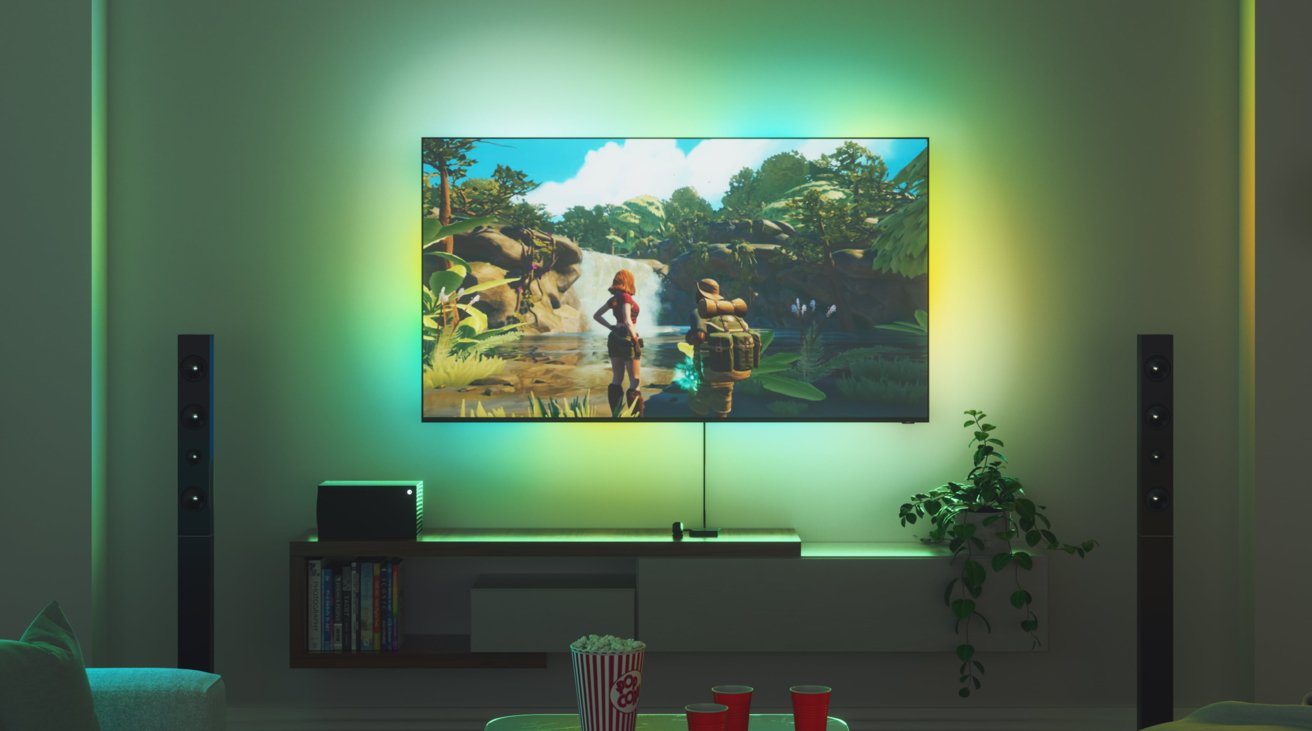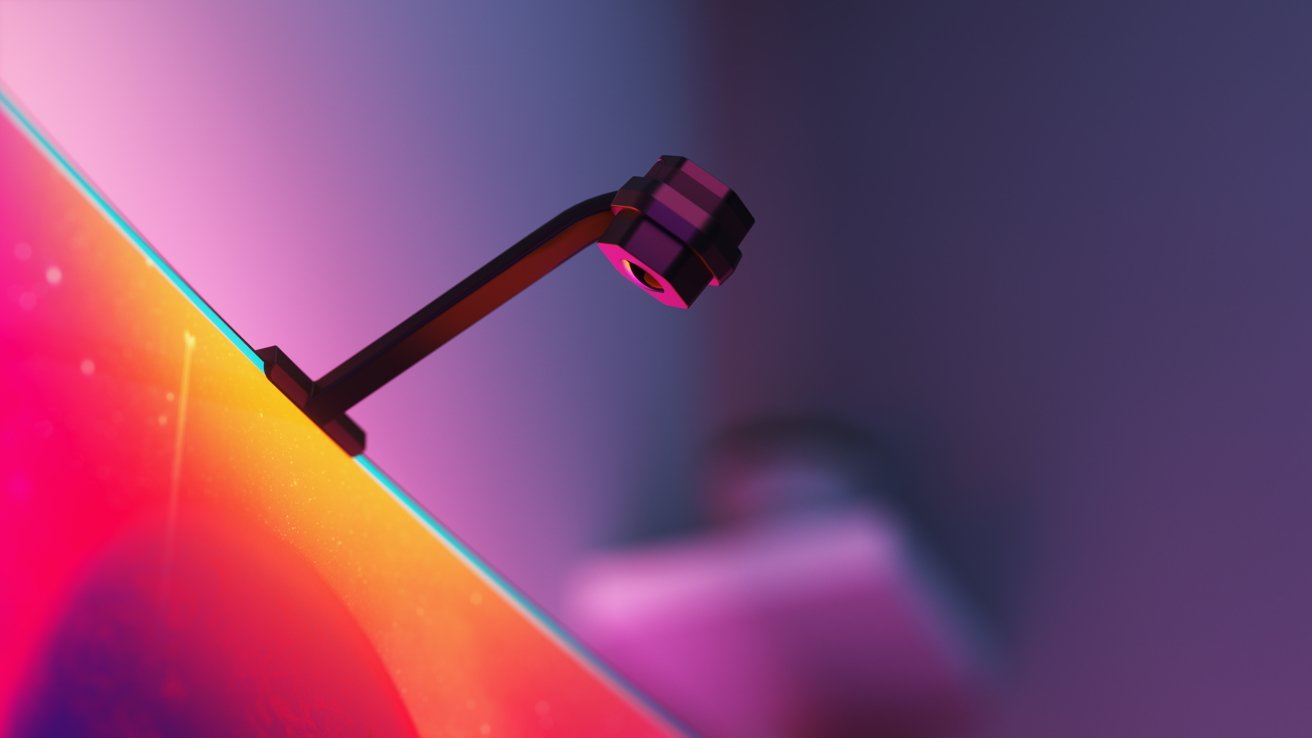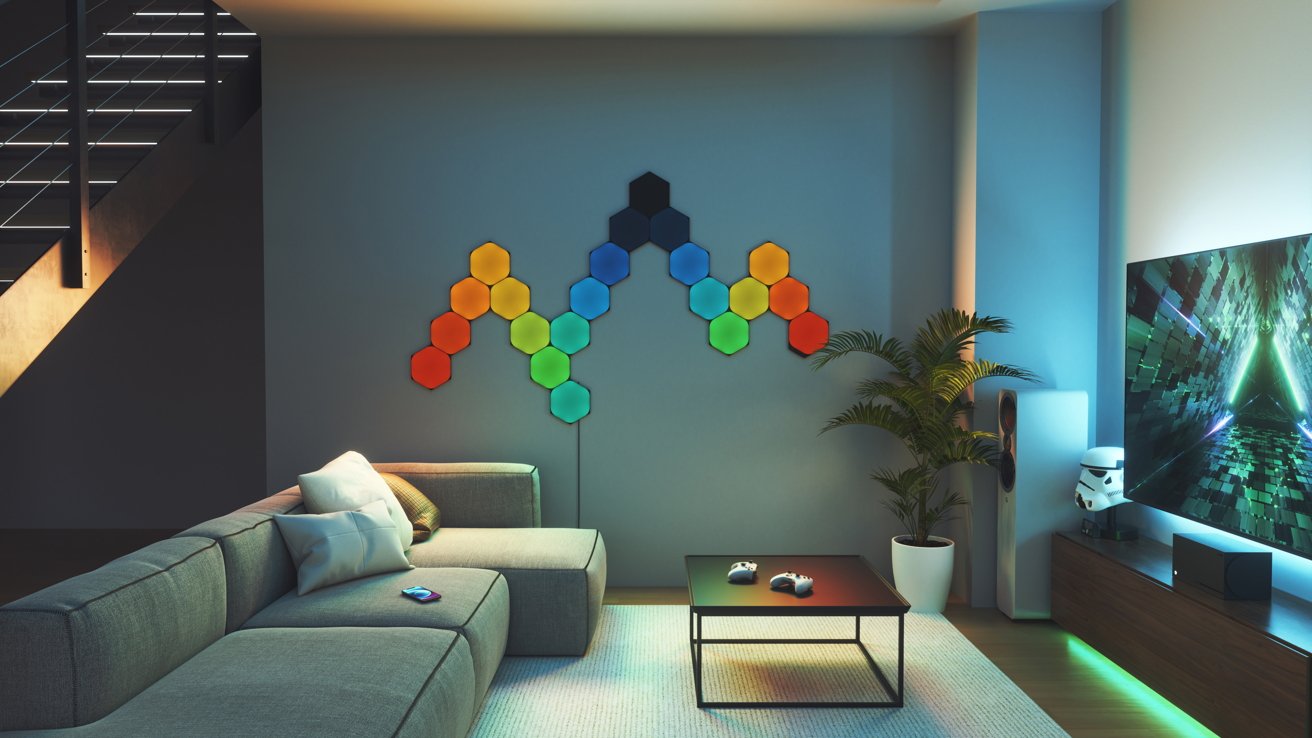After debuting at CES, Nanoleaf has opened up preorders for a number of new smart home products, including the 4D Screen Mirroring and Lightstrip Kit.
During CES 2023, Nanoleaf revealed a selection of light-related devices that it was preparing to ship. On Tuesday, it provided more availability information for some of those items.
The Nanoleaf 4D Screen Mirroring and Lightstrip Kit is a system that is a competitor to the Philips Hue Gradient Lightstrip and Hue Sync Box, which extends the colors seen on a television to the wall behind it. The Screen Mirror Camera is used to capture and analyze the image on a screen, which is then used to determine what colors are shown in the user’s environment.
The lightstrip goes behind the TV and shines light onto the wall.
A total of four mirror modes available, allowing users to go from a subtle glow to a more direct translation of the screen’s colors, with Rhythm mode adding a further level of immersion. The system also uses Sync+ technology, so that up to 50 other Nanoleaf RGB lights can be incorporated into the scene and change to match the screen’s colors.
The Nanoleaf 4D Screen Mirror Kit with the camera alone is available to preorder for shipment from mid-July, priced at $79.99 on Nanoleaf’s website. The Nanoleaf 4D Screen Mirror + Lightstrip kit for TVs and monitors up to 65 inches in size costs $99.99, while up to 85 inches is $119.99.
Along with the 3D Screen Mirror Kit, Nanoleaf is also bringing out the Ultra Black Hexagons. In effect, they are a black colorway version of its existing Shapes Hexagons, giving users another option to match their room’s aesthetic.
When turned off, the inter-connectable Hexagons are black, but they do light up edge-to-edge in a variety of colors and patterns. HomeKit support is included, along with other smart home platforms, with support for Matter on the way later in 2023.
The Ultra Black Hexagons are available in a nine-panel Smarter Kit, preorderable from Nanoleaf for $219.99, while a three-pack expansion kit costs $69.99.
This story originally appeared on Appleinsider



